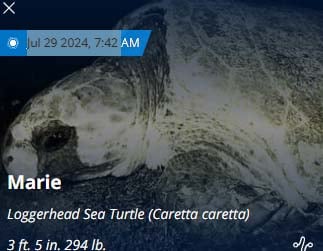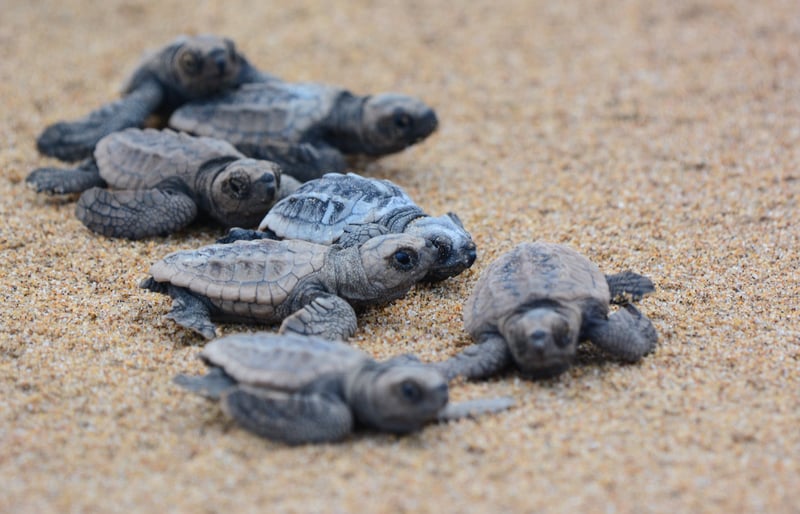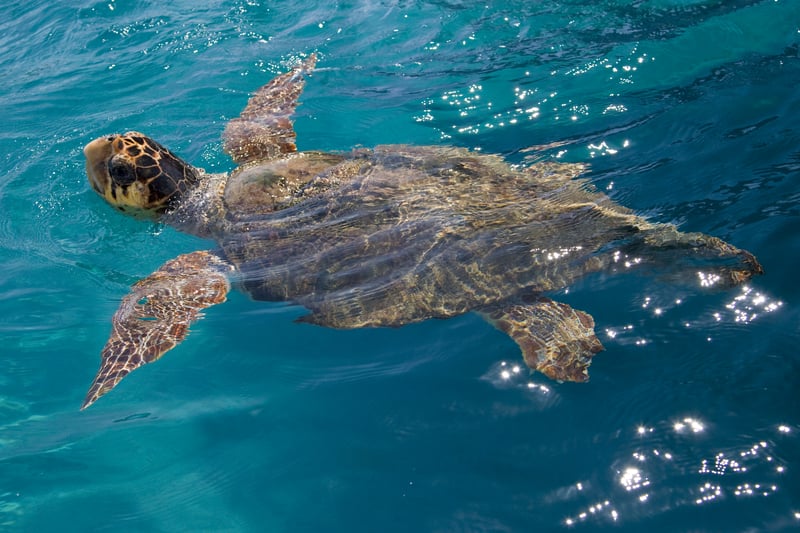
Cape May, NJ—Marie, a loggerhead sea turtle, has completed a 2,000 km journey from Juno Beach, Florida, to Cape May, New Jersey.
Marie, a 3-foot-5-inch, 294-pound loggerhead sea turtle, was tagged by Ocearch in April. Shortly after her tagging on May 22nd, she embarked on her journey north. She arrived in Cape May on July 9th, settling at the mouth of the Delaware River.
Ocearch’s tracking data recorded that Marie was tagged on April 27th at 12:00 AM in Juno Beach. Her latest recorded ping was on July 29th at 7:42 AM, with her most recent Z-ping on July 24th at 9:05 PM.
Marie has made her new summer home off the coast of Cape May, marking a significant milestone in her migration. Ocearch continues to monitor her movements as part of their efforts to study and protect sea turtles.
According to Ocearch, “Researchers from Loggerhead Marnelife Center tagged Marie after she laid her first nest of the 2024 nesting season on Juno Beach, Florida. Marie is a part of a long-term study aimed at understanding loggerhead clutch frequency, or the number of nests a single female lays within one breeding season. This project was funded in part by a grant awarded from the Sea Turtle Grants Program. The Sea turtle Grants Program is funded from proceeds from the sale of the Florida Sea Turtle License Plate. Learn more at helpingseaturtles.org.”

Loggerhead turtles (Caretta caretta) are one of the most fascinating and studied marine reptiles in the Atlantic Ocean. These ancient creatures have roamed the seas for millions of years, showcasing remarkable migratory patterns, unique behaviors, and significant ecological roles. Their life cycle and migration across the Atlantic are not only a testament to their resilience but also a crucial aspect of marine biodiversity.
Loggerhead turtles are known for their extensive migrations. Hatchlings emerge from nests on sandy beaches, typically in the southeastern United States, and make their way to the ocean. These young turtles embark on a transoceanic journey, often traveling thousands of kilometers across the Atlantic. Utilizing ocean currents such as the North Atlantic Gyre, they traverse vast distances to reach the relative safety of the open ocean.
After spending several years in the pelagic (open ocean) phase, juvenile loggerheads eventually return to coastal areas. Here, they continue to grow and mature, feeding on a diverse diet of mollusks, crustaceans, and jellyfish. Once they reach sexual maturity, usually between 17 to 33 years of age, adult females return to their natal beaches to lay eggs, completing their life cycle.

Loggerhead turtles play a vital role in marine ecosystems. As predators of invertebrates, they help maintain the balance of marine food webs. Their nesting activities also contribute to coastal ecology. The nutrients from eggs and hatchlings that do not survive provide essential nourishment for dune vegetation, which in turn helps prevent erosion.
Moreover, loggerheads serve as indicators of ocean health. Their migratory routes and population dynamics offer valuable insights into the state of marine environments and the impact of human activities such as pollution, climate change, and fishing practices.
Despite their ecological significance, loggerhead turtles face numerous threats. Coastal development, habitat loss, and climate change pose significant risks to their nesting sites. In the ocean, they are vulnerable to bycatch in fishing gear, marine debris, and boat strikes. Additionally, the ingestion of plastic waste is a growing concern, as it can lead to injury or death.

Conservation efforts are underway to protect loggerhead turtles throughout the Atlantic. International agreements, such as the Convention on International Trade in Endangered Species (CITES) and regional initiatives like the Inter-American Convention for the Protection and Conservation of Sea Turtles (IAC), aim to safeguard these creatures. Measures include protecting nesting beaches, regulating fisheries, and conducting research to better understand their behavior and habitat requirements.
Loggerhead turtles are emblematic of the challenges and triumphs of marine conservation. Their extensive migrations and ecological roles underscore the interconnectedness of oceanic systems. By continuing to protect and study these remarkable animals, we not only ensure their survival but also preserve the health and diversity of our oceans for future generations. The journey of the loggerhead turtle in the Atlantic Ocean is a story of endurance, adaptation, and the ongoing efforts to maintain the delicate balance of marine life.

